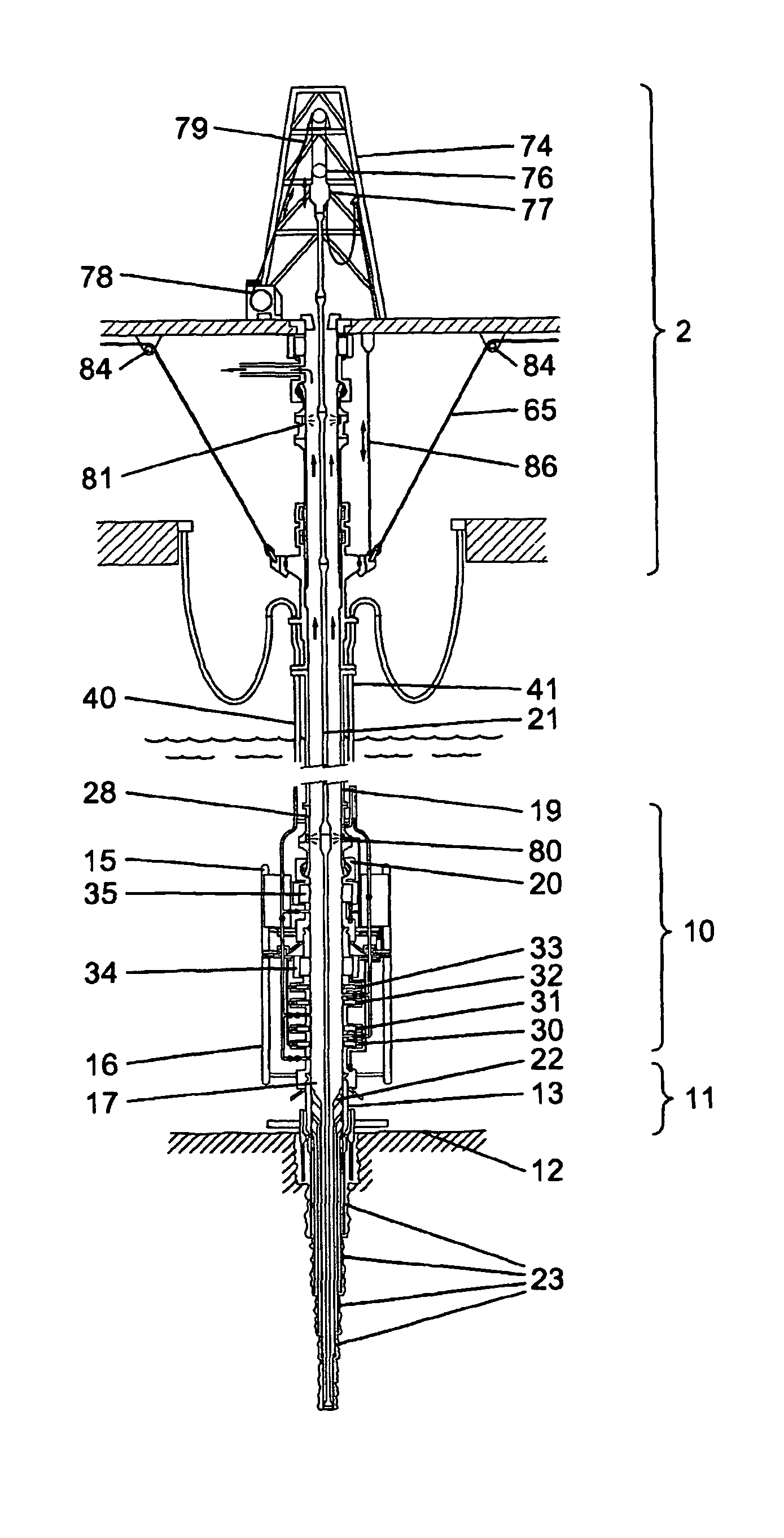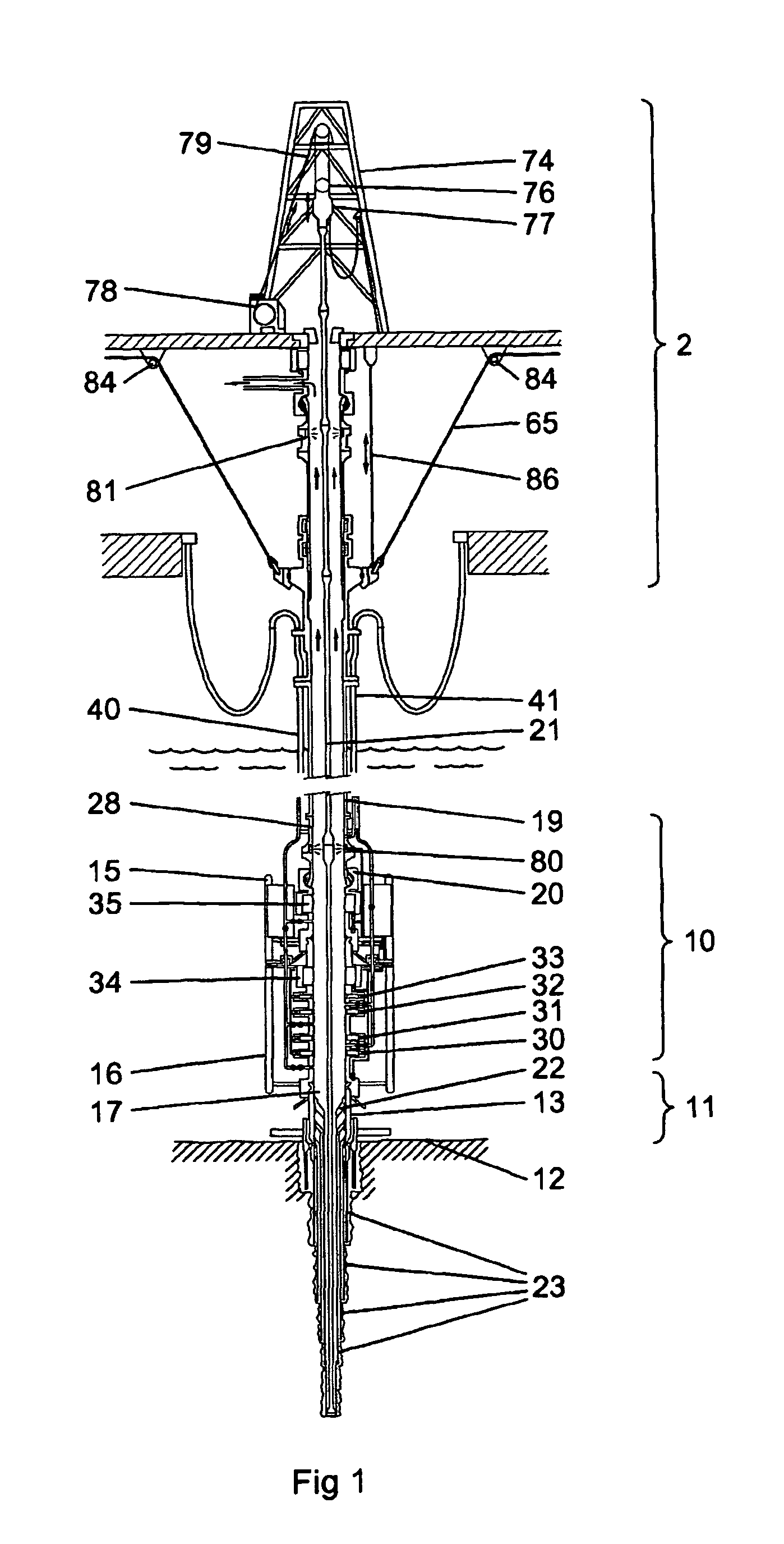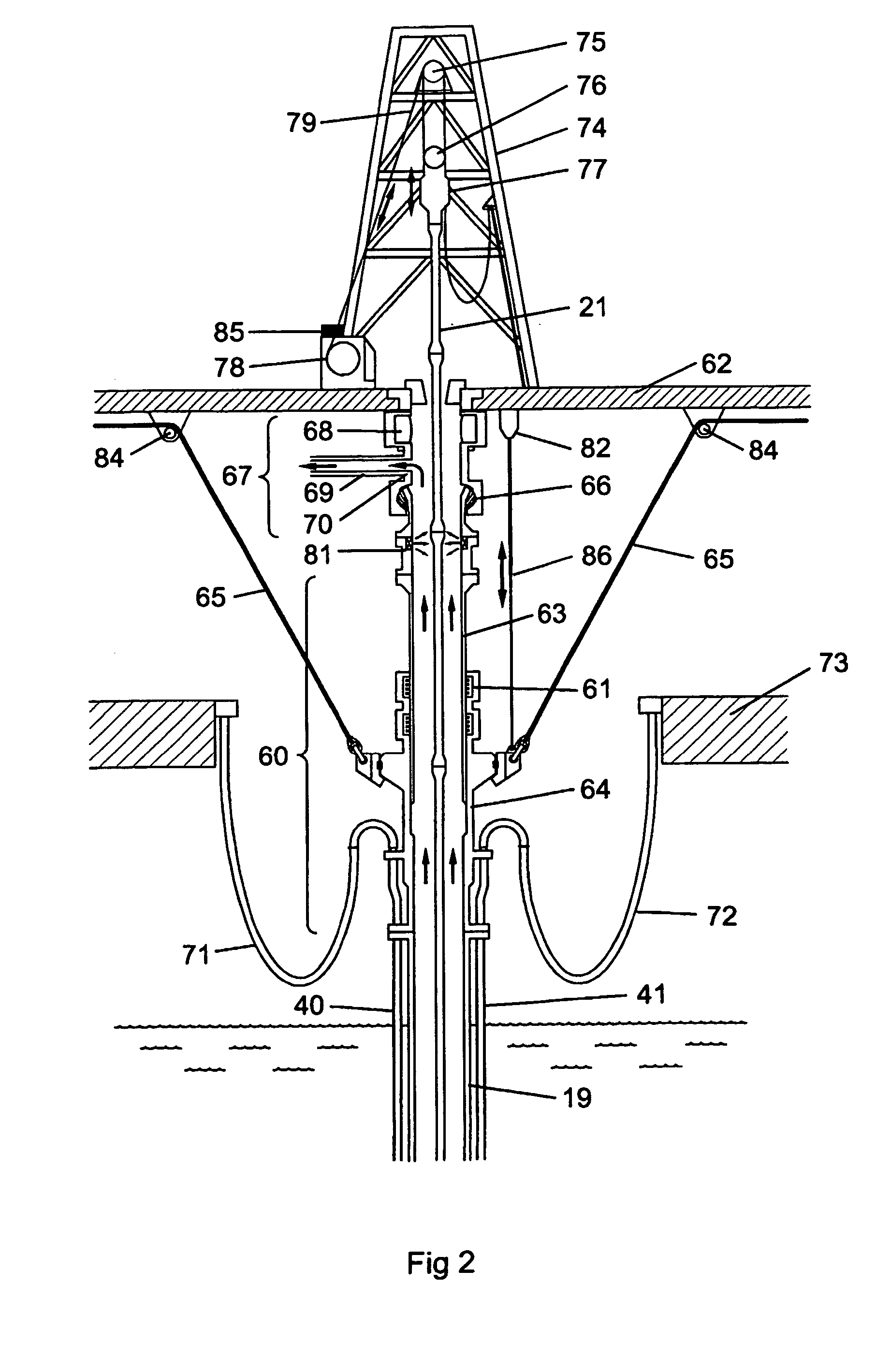Borehole equipment position detection system
a technology for positioning detection and equipment, which is applied in the direction of borehole/well accessories, surveys, instruments, etc., can solve the problems of major leakage to the environment, explosion or explosion, and subsea wells also create additional complications, etc., to achieve no disconnect and make-up interface, easy maintenance, and no damage to the surface.
- Summary
- Abstract
- Description
- Claims
- Application Information
AI Technical Summary
Benefits of technology
Problems solved by technology
Method used
Image
Examples
Embodiment Construction
[0060]A drilling rig 2, a subsea BOP assembly 10 and wellhead assembly 11 is shown schematically in FIGS. 1 to 3. A wellhead assembly 11 is formed at the upper end of a bore into the seabed 12 and is provided with a wellhead housing 13. The BOP assembly 10 is, in this example, comprised of a BOP lower riser package (LRP) 15 and a BOP stack 16. The LRP 15 and the BOP stack 16 are connected in such a way that there is a continuous bore 17 from the lower end of the BOP stack through to the upper end of the LRP. The lower end of the BOP stack 16 is connected to the upper end of the wellhead housing 13 and is sealed in place. The upper part of the LRP 15 consists of a flex joint 20 which is connected to a riser adaptor 28, which is, in turn, connected to a riser pipe 19. The riser pipe 19 connects the BOP assembly 10 to a surface rig 2.
[0061]Within the bore 17 and the riser pipe 19, a tubular string 21 is provided. Such a string is comprised of a number of different types of component in...
PUM
 Login to View More
Login to View More Abstract
Description
Claims
Application Information
 Login to View More
Login to View More - R&D
- Intellectual Property
- Life Sciences
- Materials
- Tech Scout
- Unparalleled Data Quality
- Higher Quality Content
- 60% Fewer Hallucinations
Browse by: Latest US Patents, China's latest patents, Technical Efficacy Thesaurus, Application Domain, Technology Topic, Popular Technical Reports.
© 2025 PatSnap. All rights reserved.Legal|Privacy policy|Modern Slavery Act Transparency Statement|Sitemap|About US| Contact US: help@patsnap.com



